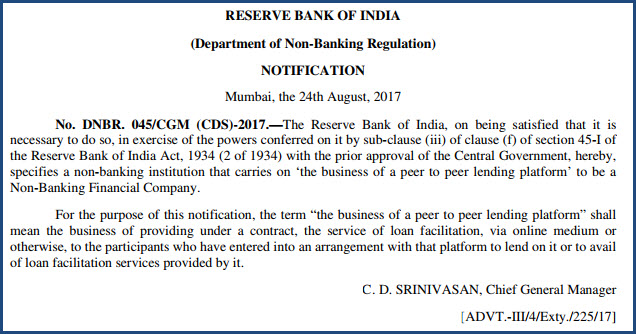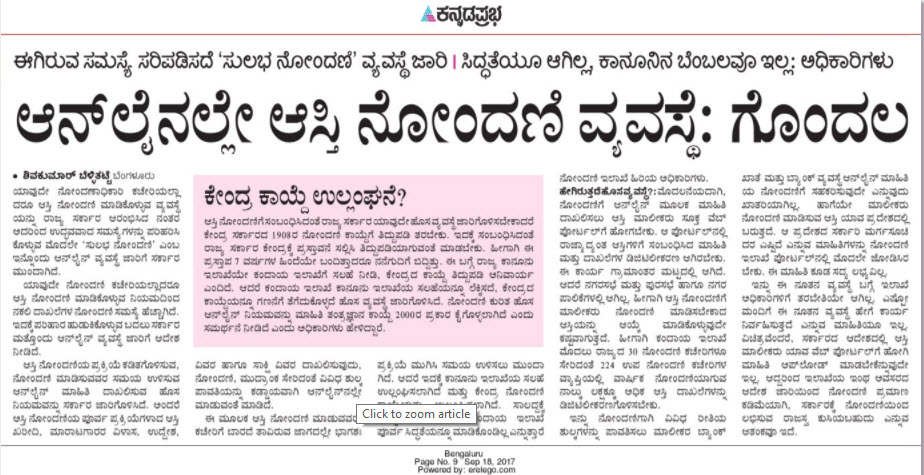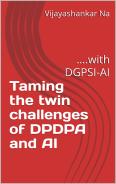Naavi.org was started way back in 1998 with a motto “Let’s Build a Responsible Cyber Society”. The “Cyber Laws” were identified as a “Norm” of the Cyber Society and hence “Cyber Law Compliance” has been a long term slogan of Naavi. It was way back in December 2000 that I made a statement in a CII seminar in Chennai stating that “Cyber Law Compliance is the Corporate Mantra for the Digital Era”.
It is of course another matter that nearly two decades afterwards we are still searching for Companies and Individuals who are keen to follow “Principles of Ethics” in their activities. Companies go after “Profits at all costs” and would not hesitate to cut corners and even down right cheat if there is an extra buck to be made. Cyber Criminals of course think it is their birth right to adopt any form on unethical behavior to reach their ends. Some of them use technology to seek revenge on others and some use technology for financial gains.
Law enforcement tries to put barriers on such Cyber Crimes with limited success. Incidence of unethical behaviour of Law Enforcement itself is also not uncommon. Behind this is the force of our political system where the corruption of the past generation such as Bofors still make headlines today and our Ministers indulge in malpractices which are specially designed to put even disciplined army officers behind bars for extended periods just to gain some political credits. Our Judiciary can also deliberately make arithmetic addition mistakes to acquit an influential politician and even Supreme Court can conveniently reserve their judgement in such open and shut cases, until the influential politician respectfully leaves the world so that his/her reputation remains in tact at death.
It is a common observation today in the Job circles particularly in the IT Segment that people seem to keep jumping from company to company at frequent intervals without any loyalty to their employers. Some times the reasons for change is genuine as when the skills of the employee does not match the job profile or growth opportunities are blocked for reasons beyond the control of the individual but mostly it is pursuit of a few more rupees in salary and nothing else.
In certain cases, inefficiency sets in with the operation of “Peter’s Principle” and employers are also required to take the tough decision of giving out pink slips.
In certain other cases, some employees commit mistakes, land the Company in trouble but quietly move off to another company before their mistakes surface.
For example, in the Cyber Security domain, we say that on an average it takes more than 270 days for a security breach to be noticed by the organization and another 90 days for corrective measures to be applied. An intelligent CISO who comes to know of the issue much before others can very well leave the organization quietly so that during his tenure everything seems to be fine and some thing happened immediately after he left. This makes a great note for the CV but it is certainly not ethical to jump the sinking ship without even warning others and take shelter in a safe haven before things go wrong and suck others into the whirlpool of doom.
Whenever we discuss Cyber Law Compliance or even Cyber Insurance, we often come across situations where the CISOs donot want to admit that there are short comings in their actions and hence keep off further compliance actions until it may be too late.It is only the owners of establishments and Promoter Directors who are really concerned about Cyber Law Compliance and Cyber Insurance since they cannot run away.
In many cases of frauds, the owners go to jail themselves for negligence though the media often makes it out as if they were criminals themselves. But they often leave the controls of Compliance to their employee subordinates who may not have the same level of commitment that the entrepreneurs themselves have on the long term stability of the organizations and suffer.
Of course this argument excludes those entrepreneurs who specialize in setting up start ups without properly securing the businesses so that they can transfer them to some venture capitalist and run away before it is too late.
Some times the Job shifts donot work out smoothly despite no ill will to start with. The current employers refuse to accept resignations and force employees who are no longer interested in continuing and in the process lose alternate opportunities.
Some times this may lead them to indulge in unethical practices such as abandoning the current employer and reporting at the new place without a relieving letter or a forged relieving letter. Some of them post derogatory messages in Glassdoor or Sarahah forcing the employers to seek legal remedies.
All these lead to an unpleasant employer-employee relations which is dysfunctional and unproductive for all. In certain cases it will kill the career of the employees who cross the limits of decency and indulge in contravention of law and end up in crimes such as defamation and hacking of their old employer systems. At that time it will be too late to put the clock back.
At the same time we also see some unethical employers who look at all outgoing employees as despicable and institute false cases against them only to prevent them from taking up other jobs.
In such an environment, seeking “Ethics” from ordinary people appears to be a little too much for this Kaliyuga. However, in every situation, there will always be some people who may still consider that if “Every One of us endeavors to be as clean as possible, the Society will be cleaner than what it is today”.
In pursuance of this “Eternal Goal”, it is our duty to recognize and appreciate the efforts of one Company in Bangalore which wants to create a business model out of an interesting concept “Ethical Job Seeker”.
This interesting concept was observed in a website www.iaccept.in belonging to a company called iAcccept Softwares Pvt Ltd, operating in Bangalore under what is indicated as a patented service.
The iAccept service tries to register employers and employees on its platform to build some kind of ethical behaviour during the time when a person is seeking the job, attending multiple interviews, accepting an offer at one place but getting a better offer in another and finally ending up up displeasing one or more employers.
The Employee thinks that it is his right to chose the best offer and the employer thinks that once he has issued an appointment letter and the person does not either accept it for an indefinite time or accepts it and later rejects it or does not simply report, is upsetting his plans for recruitment and wasting his time and money.
Often recruitment process runs for a long time for a month or two and if the candidate who has been interviewed by three or four executives and has been issued with the appoint letter makes it necessary for the organisation to go through the frustration of repeating the process once again, it leaves bad blood behind. In the meantime, if the acceptance of the resignation of its own employee who is being replaced is delayed, there is a problem for that individual also.
In a bid to find a solution to this problem, What iAccept proposes is to create a “Ethical Job Seeker” who registers on this platform. Simultaneously, potential employer organizations also register in the same platform.
The job seekers who register commit themselves to the following code of ethics:
I affirm that I have not and will not misrepresent about my educational qualifications.
I affirm that I have not and will not misrepresent about my employment status or my past or current employers
I shall always strive to keep my word and will honour any commitments made and believe that this is the foundation of my personal integrity.
I will not lay blame, try to justify, or give excuses. I will take prompt actions to innovate and improve to achieve better results. I will be accountable and I will take full responsibility to initiate all necessary actions.
It is expected that the candidates who accept an employment seeks a “release request” if he changes his mind and wants to accept another offer.
The job seekers would be evaluated with a “iAccept Score” which is computed out of a “Credibility Score” and “Ethic index”. When a candidate accepts a job, does not cancel or send regret letter and does not report would be considered as a “No Show” and his “Credibility Score” would suffer. Similarly when a candidate absconds from work without proper resignation and settlement of dues, his “Ethics Score” would suffer.
This means that a candidate who has built up a “Good iAccept Score” over a period is likely to get better attention from employers.
The registered employers on the platform submit themselves to the following code of ethics on their part.
As an organization, we will maintain positive, open, and value-added communication at all times and establish standards for ethical behaviour and integrity
We take pride in according individual respect, trust and teamwork.
We endeavour to sustain a work environment founded on dignity and respect for all employees
We help to make employees feel their jobs are important and cultivate the full potential of all employees
We encourage individual pursuit of work/life balance
We enable the well-being of individuals and their families through compensation, benefits, policies and practices
We appreciate and recognize the contributions of people who work here
We encourage employees to get involved in community endeavours
We consider the human toll when making business decisions
Obviously the concept will start providing benefits to the registered job seekers and employers over a period of time. The Companies are likely to have a higher concentration of ethical employees and the employees may get offers from companies good to work with.
The portal does not focus on being a “Job Portal” but encourages use of the platform to generate Service Letters/Experience letters without the need for contacting the old employers, send regret letters and also send in resignation letters.
Probably the concept can be further refined and additional value added. But we need to recognize that the idea is innovative and has a strong ethical objective to clean up the chaotic job market.
It is time for all job seekers and employers to take a look at this service and use it if it suits them.
Comments are welcome.
Naavi










